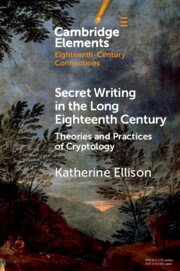Element contents
Secret Writing in the Long Eighteenth Century
Published online by Cambridge University Press: 24 November 2022
Summary
- Type
- Element
- Information
- Online ISBN: 9781009086820Publisher: Cambridge University PressPrint publication: 08 December 2022
References
- 14
- Cited by

